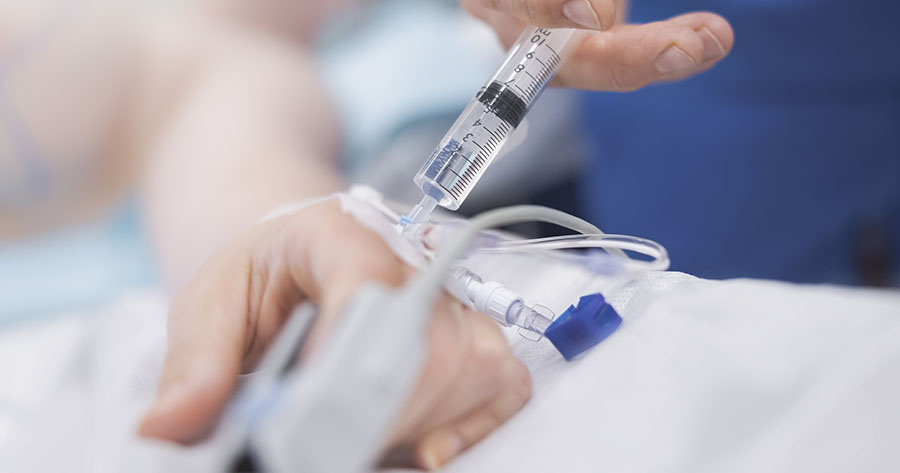The number of people with type 2 diabetes is rising rapidly, largely driven by increasing levels of obesity. Obstructive sleep apnoea (OSA) is a condition that often accompanies diabetes and obesity. OSA is a common condition affecting 2–4% of the general population (Young et al, 1993). This prevalence is likely to be an underestimation; data from the USA have indicated that approximately 17% of adults have mild or severe OSA (Young et al, 2005).
Background
OSA is part of a continuum of breathing disorders during sleep, ranging from snoring to complete cessation of breathing. OSA is characterised by frequent collapse of the upper airway during sleep resulting in a complete lack of airflow (apnoea) or reduced airflow (hypopnoea) that subsequently leads to reduced oxygen levels in the blood (oxygen desaturation). The measurement for severity of OSA is based on the number of apnoeas and hypopnoeas per hour of sleep (the apnoea–hypopnoea index [AHI]). OSA is diagnosed when AHI is ≥5/hour. Reduced airflow and blood oxygen levels result in arousal and poor sleep quality. The individual is often unaware of the arousals. Thus, OSA can increase the risk of excessive daytime sleepiness (EDS) and road-traffic and workplace accidents.
OSA is more common in men than in women and its prevalence increases with age. Some ethnic groups are particularly vulnerable to OSA including African American and Hispanic people. Obesity is a major risk factor for OSA. Several gene variants have been associated with OSA, suggesting a complex genetic predisposition. Another important risk factor is craniofacial abnormality, which results in a narrow upper airway. Some endocrine disorders (polycystic ovary syndrome, hypothyroidism and acromegaly) predispose a person to OSA. OSA can be exacerbated by smoking and alcohol intake.
Symptoms of OSA include snoring, witnessed breath-holds, gasping and choking, fatigue, reduced alertness, EDS, nocturia, morning headaches, reflux oesophagitis, poor memory, low mood and sexual dysfunction. The bed partner commonly has poor sleep quality and, therefore, EDS.
OSA is also associated with hypertension and increased cardiovascular (CV) risk. Several population studies have reported an association between snoring, OSA and CV risk factors, including diabetes (Aronsohn et al, 2010; Punjabi et al, 2004). OSA can be effectively treated with continuous positive airway pressure (CPAP), a cost-effective treatment approved by NICE (2008) for moderate or severe OSA (AHI ≥15/hour). CPAP provides a pneumatic splint for the airway by blowing air via a mask into the upper airway during expiration. The technology has improved dramatically in providing smaller, more compact, quieter machines and better interfaces via face or nasal masks.
OSA and type 2 diabetes: the evidence
OSA is an emerging complication in the type 2 diabetes population. The prevalence of OSA in this group is high, with a range of 20–80% depending on the population studied and the study setting. The relationship between OSA and diabetes can be bi-directional. Findings from several studies have indicated that OSA contributes to insulin resistance, whereas diabetes – particularly diabetic neuropathy – can alter airway control and breathing to result in or exacerbate OSA. The link between OSA and diabetes and insulin resistance has been shown by several, but not all, studies to be independent of obesity. This is supported by studies in both humans and animals showing a link between hypoxia and glucose metabolism.
Animals and humans exposed to intermittent hypoxia (mimicking OSA) demonstrate reduced insulin sensitivity. Reduced insulin sensitivity can also occur at high altitudes and in chronic obstructive pulmonary disease, both of which are also associated with hypoxia. Despite this evidence, CPAP treatment has not consistently been shown to improve insulin sensitivity or diabetes control, which could be due to several methodological flaws in the available studies. However, it is apparent that OSA and diabetes are closely linked and that they share important risk factors and complications. It is therefore important that healthcare professionals caring for people with type 2 diabetes are aware of the signs and symptoms of OSA and that these people receive appropriate assessments for early diagnosis.
Although it is unclear whether CPAP improves type 2 diabetes, the treatment of OSA in people with this condition could have a positive impact on daytime functioning, and on reduction of accidents, blood pressure, and rates of CV disease and stroke. Untreated severe OSA can result in pulmonary hypertension and heart failure. OSA is associated with sudden death caused by arrhythmias and can lead to atrial fibrillation. OSA may also contribute to sexual dysfunction in people with type 2 diabetes. Emerging evidence also suggests that OSA and associated intermittent hypoxia contribute to microvascular complications, with most evidence available for retinopathy, particularly sight-threatening maculopathy.
Diagnosis and identification
A diagnosis of OSA first requires high awareness of the syndrome. Currently, awareness is poor and many people with the syndrome remain unrecognised. During all annual reviews for people with type 2 diabetes it is important to ask them about symptoms associated with OSA. It is particularly important to also obtain the patient’s sleep history from their partner, if available. As most people with type 2 diabetes have increased body weight, it is difficult to identify at-risk individuals by weight alone. Special attention should be paid to neck circumference and shirt collar size (≥17 inches in men, ≥16 inches in women). Hypertension is a key risk factor, particularly in cases of uncontrolled blood pressure despite the use of several antihypertensive medications. Although men are at greatest risk, women should not be forgotten. Individuals who smoke and drink alcohol are also vulnerable to developing OSA. Individuals reporting low libido and erectile dysfunction should be considered for the potential presence of OSA.
Several questionnaires are used to aid the diagnosis of OSA, including the Epworth Sleepiness Scale and the Berlin Questionnaire. The Epworth scale identifies the degree of sleepiness (people with OSA generally score ≥10), whereas the Berlin questionnaire classifies individuals as at high or low risk of OSA. Unfortunately, in the authors’ experience, the questionnaires are only beneficial for identifying the most severe OSA cases in people with type 2 diabetes; therefore, clinical judgment is important.
A significant question is whether there have been any observed cessations of breathing during sleep. Although the perceived gold standard for the diagnosis of OSA is an overnight sleep study in the sleep laboratory, OSA can be easily and accurately identified using home multichannel sleep recording (measuring chest and abdominal movement, nasal airflow and oximetry) or home oximetry alone for straightforward cases. Referral to a local sleep or respiratory centre is necessary for these studies. People with OSA can then be treated with CPAP if they fulfil the NICE (2008) criteria. However, a common problem with CPAP is adherence and sufficient night-time use. Thus, it is important to assess these factors on a regular basis. It is also important to address lifestyle change as this can have a major impact on reversing or improving OSA.
Conclusion
OSA is a common syndrome that often accompanies type 2 diabetes with potential serious health consequences. The pathophysiological relationship between OSA and type 2 diabetes is currently under intense investigation. OSA is often missed in people with diabetes. It is important for nurses and physicians to be vigilant and ensure that people with type 2 diabetes with OSA are identified early, thoroughly assessed and provided with appropriate treatment.





The risk factors and what might be done to address them.
24 Mar 2025